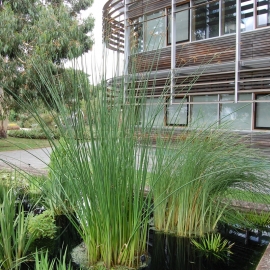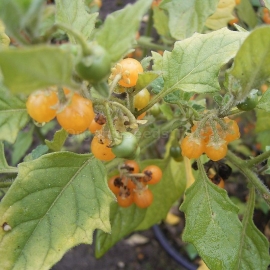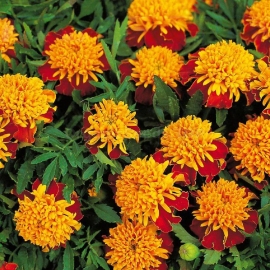 EXCLUSIVE
EXCLUSIVE





Organic Scirpus Lacustris Seeds (Schoenoplectus l.)
2.00 €
Great bulrush. Perennial aquatic plant from temperate regions, growing to 3 m (10 ft) high or more. Edible parts include the young roots and rhizomes (cooked), the stem bases (raw or cooked), seeds and young shoots (raw or cooked).
-
Organic Scirpus lacustris (Schoenoplectus l.)
Great bulrush. Perennial aquatic plant from temperate regions, growing to 3 m (10 ft) high or more. Edible parts include the young roots and rhizomes (cooked), the stem bases (raw or cooked), seeds and young shoots (raw or cooked).
The stems can be used for baskets, mats etc. A water purifier and good fowl fodder which also prevents erosion. Likes sun and water or at least wet soil! Hardy to -25°C.
How to Grow
Germination and seedling emergence of Scirpus lacustris L. ssp. lacustris (S.l. lacustris), S. lacustris L. ssp. tabernaemontani (C.C. Gmelin) Syme (S.l. tabernaemontani) and Scirpus maritimus L. were investigated in order to assess their ability to establish from seed in former tidal waters, where the original standing population has almost completely disappeared.
Germination of 1-year-old seeds of all three taxa was improved by stratification (wet/cold storage) and in the case of S.l. lacustris and S. maritimus, by bleach-scarification (seeds pre-soaked in sodium hypochlorite). Germination of S.l. lacustris and S. maritimus was equally improved by both pretreatments.
When light was supplied during daytime, the minimum stratification period required for maximum germination was lower for S. maritimus (4 weeks) than for both S. lacustris subspecies (more than 6 weeks). In continuous darkness, seeds of the three taxa hardly germinated after a stratification period of less than 6 weeks, but after 80 weeks of stratification, germination in light and darkness were almost equal.
Fluctuating temperatures compared with constant temperatures improved germination of S.l. tabernaemontani and S. maritimus, but not that of S.l. lacustris. The amplitude between day and night temperature (from 5 to 25°C) did not affect germination. Germination of S. maritimus increased with increasing day temperature. Generally, at constant temperatures the germination of 66-month-old seeds was reduced compared with that of 14-month-old seeds of all three taxa. At a fluctuating temperature of 30/5°C, germination of old compared with young seeds of S.l. lacustris and S. maritimus was not reduced; it was halved, however, in S.l. tabernaemontani.
Underwater the three Scirpus taxa were able to emerge from the substrate after being buried at substrate depths of 0.5 and 2 cm. At a burial depth of 5 cm only a small portion of the S. maritimus seeds and none of the two S. lacustris subspecies emerged. The failure to germinate and emerge at 5 cm burial depth could not be ascribed to diminishing fluctuation of temperatures with increasing burial depth.
In the field, when pre-germinated seed was sown above the driftline of a bare river bank 15% of S. maritimus, 3.3% of S.l. tabernaemontani and 0.1% of the seeds of S.l. lacustris became established. The establishment was lower when the seeds were not pre-germinated, whereas underwater establishment of seedlings, if seeds germinated at all, probably failed owing to wave action.
Products Viewed Before
Product code: 11964
1.14 €
This fast-growing, newly discovered plant from the Solanaceae family produces clusters of sweet, yellow or orange berries, (which bear a striking resemblance to yellow currants but are no relation), on long dividing stems.
Product code: 12304
1.14 €
Grow this charming annual from Marigold seeds. It is a dwarf variety and early flowering with double crested flowers. The blooms are bi-colored with shades of red and orange, and they are so gorgeous that they demand a second look!
Product code: 12275
1.14 €
Golden King Of Siberia tomato is a very tasty oxheart variety. They ripen to a really soft yellow about 80 days after transplant. Plants have the signature wispy leaves and are really good with diseases. Tomatoes are about 6-16 ounces.



